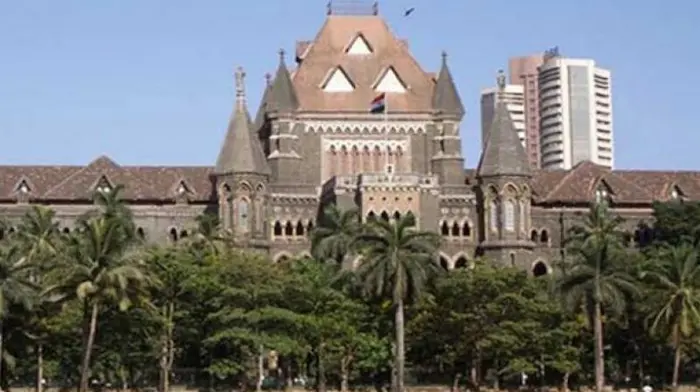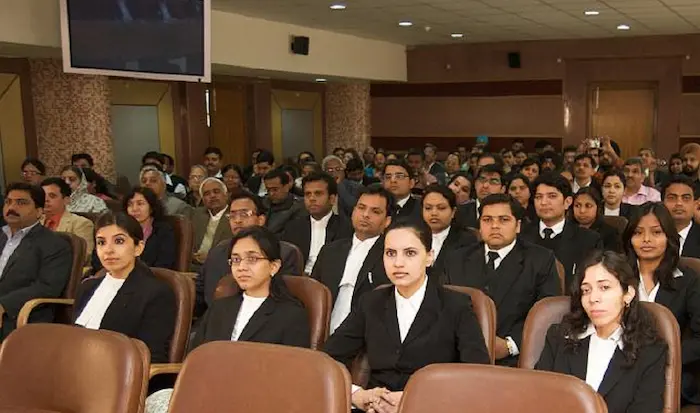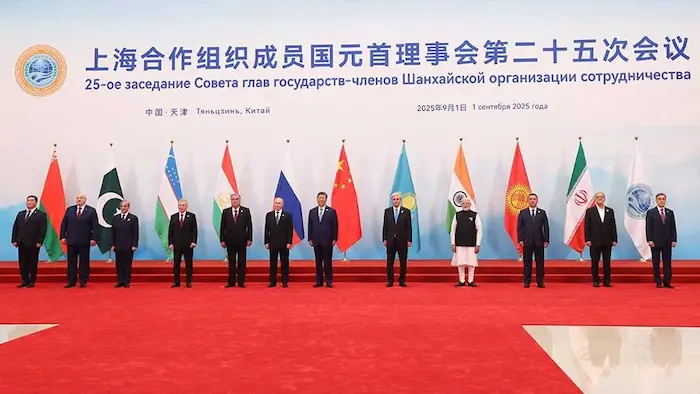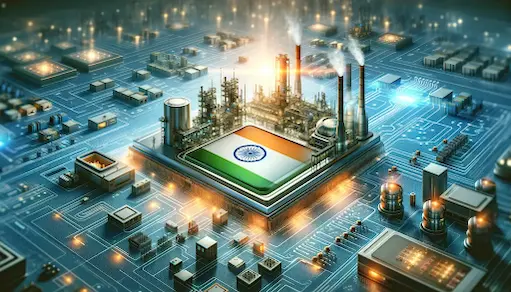1. Recusal of Judges in India – Polity
Why in News?
A judge of the Madhya Pradesh High Court recused himself from hearing a case related to alleged illegal mining, citing that an MLA tried to approach him informally regarding the matter.
Key Points:
- Recusal means a judge voluntarily withdrawing from hearing a case due to possible conflict of interest or appearance of bias.
- No codified law exists on recusal in India, but Supreme Court guidelines provide the legal framework.
- The concept is grounded in the legal maxim: “Nemo judex in causa sua” — No one should be a judge in their own case.
Legal and Judicial Basis:
- In Ranjit Thakur v. Union of India (1987), the Supreme Court held that the perception of bias in the mind of the affected party is enough ground for a judge to recuse.
- Judges may recuse for reasons like:
- Personal or professional links with parties.
- Prior involvement in the case.
- Financial interests (e.g., shareholding in a related company).
- Ex parte communications.
- Reviewing their past judgments.
Concept Simplified:
Recusal helps maintain public confidence in the impartiality and fairness of the judiciary. However, since there are no uniform procedures, the decision to recuse lies solely with the judge. It can be declared:
- Verbally in court,
- Through a formal order, or
- Silently, without explanation.
Issues & Concerns:
- Lack of Uniformity: Judges follow different approaches in absence of formal codified rules.
- Risk of Bench Hunting: Litigants may misuse recusal to get a favorable bench.
- Delays & Misuse: Frivolous recusal requests may obstruct justice and overburden courts.
Exam Connect – Possible Questions
Prelims
1. The principle of nemo judex in causa sua relates to:
A. Separation of powers
B. Rule of law
C. Judicial accountability
D. Judicial impartiality
Answer: D. Judicial impartiality
2. In which of the following cases did the Supreme Court lay down the “test of bias” for judicial recusal?
A. Kesavananda Bharati v. State of Kerala
B. Ranjit Thakur v. Union of India
C. Indira Gandhi v. Raj Narain
D. S. R. Bommai v. Union of India
Answer: B. Ranjit Thakur v. Union of India
Mains:
1. “Judicial recusal is essential to uphold the fairness of the judiciary, but the absence of standard procedures raises concerns.” Discuss with reference to recent judicial developments.
2. Critically evaluate the need for a codified framework governing judicial recusal in India. How can judicial accountability be balanced with judicial independence?
2. RTE Act and Minority Educational Institutions – Polity

Why in News?
The Supreme Court has questioned its own 2014 judgment in the Pramati Educational and Cultural Trust case, which exempted minority educational institutions from the RTE Act provisions. A two-judge bench is reconsidering whether Teacher Eligibility Test (TET) should be mandatory for teachers in minority schools, citing concerns about quality education and children’s fundamental rights.
Key Points:
- The Right to Education (RTE) Act, 2009 mandates:
- Free and compulsory education for children aged 6–14.
- 25% reservation for disadvantaged groups in private schools.
- Minimum qualifications for teachers (including TET).
- Pupil-teacher ratios and infrastructure norms.
- The 2014 Pramati judgment exempted minority institutions from these obligations, citing Article 30(1) — right of minorities to establish and administer educational institutions.
- The Supreme Court (2024) has now flagged this judgment as “legally suspect”, stating it may undermine Article 21A, which guarantees fundamental right to education.
- The Bench observed a need to balance minority rights with children’s right to quality education, especially:
- Ensuring TET-qualified teachers in all schools.
- Maintaining uniform educational standards.
- Teacher Eligibility Test (TET) is now being reconsidered as mandatory even for minority schools, especially for in-service teachers:
- Teachers with less than 5 years of service: May continue temporarily without TET.
- Teachers with more than 5 years: Must pass TET within 2 years.
Constitutional Conflict:
- Article 21A (86th Amendment): Right to free and compulsory education.
- Article 30(1): Rights of minorities to establish and administer their own educational institutions.
- Conflict: Should the institutional autonomy of minorities override the state’s obligation to provide quality education?
Concept Simplified:
The case is essentially a rights vs. rights conflict:
- Minority rights (to preserve culture and autonomy).
- Children’s rights (to receive quality education under the RTE Act).
The Court aims to ensure equality in educational standards without diluting minority identity, possibly leading to a revised interpretation of the Pramati judgment.
Exam Connect – Possible Questions
Prelims
1. The Pramati Educational and Cultural Trust case (2014) dealt with:
A. Environmental clearance for tribal areas
B. Exemption of minority institutions from RTE Act provisions
C. Internet shutdowns during exams
D. Reservation in public employment for EWS
Answer: B. Exemption of minority institutions from RTE Act provisions
2. Which of the following Articles guarantees minorities the right to establish and administer educational institutions of their choice?
A. Article 14
B. Article 15(4)
C. Article 21A
D. Article 30(1)
Answer: D. Article 30(1)
Mains
1. “Balancing the autonomy of minority institutions with the right to quality education for all children is a constitutional necessity.” Discuss in light of recent judicial observations.
2. Critically examine the implications of exempting minority institutions from the provisions of the RTE Act. How does this affect educational equality in India?
3. Appointment of Vice-Chancellors by Governor – Polity
Why in News?
A controversy has arisen in Kerala over the appointment of Vice-Chancellors (VCs) in state universities. The Governor, acting as ex-officio Chancellor, approached the Supreme Court to exclude the Chief Minister from the VC selection process, highlighting an ongoing tussle between constitutional roles and political influence in university governance.
Key Points:
- The Vice-Chancellor (VC) is the Principal Academic and Executive Officer of a university, playing a pivotal role in academic governance and policy execution.
- VC appointments are governed by the University Grants Commission (UGC) Regulations, 2018, which mandate a Search-cum-Selection Committee to recommend a panel of names.
- In State Universities, the Governor (Chancellor) usually appoints the VC from this panel, often independently of the state cabinet.
- In case of conflict between UGC Regulations and State laws, Article 254 of the Constitution establishes that UGC norms prevail, provided the matter falls within the Concurrent List and there is no presidential assent to the contrary.
Constitutional & Legal Aspects:
- Article 154: Executive power of the state vests in the Governor.
- Article 163: Governor to act on the aid and advice of the Council of Ministers except in matters where the Constitution requires him to act in his discretion.
- Article 254: In case of inconsistency between Central and State law on a Concurrent List subject, Central law prevails unless the state law has received Presidential assent.
Concept Simplified:
- In State Universities, the Governor, as Chancellor, often exercises discretion in university affairs such as VC appointments. This setup is under strain when state governments seek greater control over appointments.
- In Central Universities, the President of India is the Visitor, a ceremonial yet legally empowered figure who:
- Appoints VCs based on Search Committee recommendations.
- Can reject a panel and ask for a fresh one.
- Can order inspections and inquiries under the Central Universities Act, 2009.
Issues & Concerns:
- Centre-State Friction: As education is in the Concurrent List, disputes between central regulations (like UGC norms) and state preferences are common.
- Politicization of Higher Education: Involving the Chief Minister or state political figures in appointments may erode institutional autonomy.
- Role Clarity: The Governor’s dual role — constitutional head vs. Chancellor — often creates confusion and governance gaps.
Exam Connect – Possible Questions
Prelims
1. Under which of the following constitutional provisions does the central law prevail over state law in case of a conflict in the Concurrent List?
A. Article 245
B. Article 254
C. Article 263
D. Article 280
Answer: B. Article 254
2. Who appoints the Vice-Chancellors in Central Universities under the Central Universities Act, 2009?
A. Union Minister of Education
B. University Grants Commission
C. President of India
D. Prime Minister of India
Answer: C. President of India
Mains
1. “The growing friction between Governors and State Governments over Vice-Chancellor appointments reflects deeper issues in Indian federalism.” Discuss with reference to Article 254 of the Constitution.
2. Critically analyze the impact of political influence in university governance in India. How can a balance be maintained between institutional autonomy and state accountability?
4. Sickle Cell Disease (SCD) and the Battle for Disability Justice – Polity
Why in News?
Despite being recognized under the Rights of Persons with Disabilities (RPWD) Act, 2016, Sickle Cell Disease (SCD) remains excluded from crucial entitlements such as employment reservations. The March 2024 guidelines for disability certification have sparked criticism for their rigid and exclusionary framework, especially in dealing with episodic and invisible disabilities like SCD.
Key Points:
- The RPWD Act, 2016 was enacted to ensure equality, dignity, and non-discrimination for persons with disabilities.
- While SCD is listed as a recognized disability, it is excluded from employment reservations, denying patients access to a critical empowerment tool.
- The disability certification system is based on quantifiable metrics (e.g., percentage of impairment), which do not capture the episodic nature of SCD (e.g., unpredictable pain crises, fatigue).
- SCD disproportionately affects marginalized communities, especially Scheduled Tribes (STs), exacerbating existing social and economic inequalities.
Legal and Policy Framework:
- RPWD Act, 2016:
- Covers 21 specified disabilities (including SCD).
- Requires minimum 40% disability to qualify for benefits like education and job reservations.
- Calls for inclusion, accessibility, and empowerment of persons with disabilities.
- Certification Issues:
- Based on rigid clinical assessments.
- Often fails to account for “invisible” or fluctuating conditions, leaving many without recognition or access to state benefits.
Concept Simplified:
- Sickle Cell Disease (SCD) is a genetic blood disorder causing abnormal red blood cells, leading to chronic pain, fatigue, organ damage, and reduced life expectancy.
- Invisible disability refers to conditions that are not externally visible but significantly impair daily life (e.g., mental illness, chronic pain, or SCD).
- The gap between legal recognition and actionable rights undermines the spirit of the RPWD Act and excludes many from its protections.
Issues & Concerns:
- Exclusion from Quotas: Recognition without reservations or economic benefits limits the effectiveness of legal protection.
- Rigid Assessment Models: Standardized evaluation fails to reflect real-world disability experience for SCD patients.
- Marginalization: SCD is more prevalent among tribal populations, making this also a case of intersectional discrimination.
Exam Connect – Possible Questions
Prelims
1. Which of the following statements is correct regarding the Rights of Persons with Disabilities (RPWD) Act, 2016?
A. It recognizes only physical disabilities.
B. It excludes genetic disorders like Sickle Cell Disease.
C. It mandates a minimum of 40% disability for availing certain benefits.
D. It is applicable only to central government institutions.
Answer: C. It mandates a minimum of 40% disability for availing certain benefits.
2. Sickle Cell Disease (SCD) is:
A. An autoimmune disease
B. A communicable respiratory disease
C. A genetic blood disorder
D. A viral infection caused by sickle virus
Answer: C. A genetic blood disorder
Mains
1. “Legal recognition of a disability must translate into enforceable rights and meaningful inclusion.” Critically examine this statement in the context of Sickle Cell Disease and the RPWD Act, 2016.
2. Discuss the challenges posed by invisible and episodic disabilities in India’s current disability certification system. What reforms are needed to ensure social justice and inclusivity for affected individuals?
5. India Needs More Women Judges in the Supreme Court – Polity

Why in News?
Following the retirement of Justice Sudhanshu Dhulia in August 2025, the appointment of Justices Vipul Pancholi and Alok Aradhe, without including a woman judge, has reignited the debate around gender disparity in the Supreme Court. With Justice B.V. Nagarathna as the only sitting woman judge, the situation raises serious questions about the lack of representation of women in the highest judicial body of India.
Key Points:
- Since its inception in 1950, the Supreme Court has appointed only 11 women judges, out of a total of 287 judges — just 3.8% representation.
- Justice Fathima Beevi was the first woman judge, appointed in 1989 — nearly 40 years after the Court’s establishment.
- There has never been a woman judge in the Supreme Court from Scheduled Castes (SCs) or Scheduled Tribes (STs), and only one woman has come from a religious minority.
- In August 2021, three women judges were appointed together, temporarily pushing women’s representation above 10%, but the progress was not sustained.
Legal and Structural Issues:
1. Collegium System Concerns:
- The judicial collegium, which recommends appointments to higher judiciary, lacks transparency and formal criteria for ensuring diversity or gender balance.
- Gender is not systematically considered in the appointment process.
2. Late Appointments and Short Tenure:
- Many women are appointed at a later stage in their careers, resulting in shorter tenures and limited chances of elevation to Chief Justice of India (CJI).
3. Structural and Cultural Barriers:
- Lack of representation in High Courts and trial courts, limited mentorship, and gender biases contribute to a leaky pipeline for women in the judiciary.
Concept Simplified: Why Representation Matters
- A representative judiciary strengthens public trust, enhances institutional legitimacy, and brings diverse perspectives to legal interpretation, especially on issues affecting women, children, and marginalized groups.
- Gender diversity is essential for constitutional values such as:
- Article 14 – Equality before law
- Article 15(3) – Special provisions for women and children
- Article 39(a) – Equal justice and free legal aid
Issues & Concerns:
- Tokenism: Sporadic appointments of women do not address systemic inequality.
- Lack of Diversity within Diversity: Representation of women from marginalized social groups (SC/ST/OBC/Minorities) is nearly non-existent.
- Impact on Jurisprudence: Absence of women limits the Court’s ability to reflect lived realities in judgments, especially on issues like sexual violence, workplace harassment, and gender rights.
Exam Connect – Possible Questions
Prelims
1. Who was the first woman judge appointed to the Supreme Court of India?
A. Justice Sujata Manohar
B. Justice B.V. Nagarathna
C. Justice Ruma Pal
D. Justice Fathima Beevi
Answer: D. Justice Fathima Beevi
2. As of August 2025, what percentage of all judges appointed to the Supreme Court since 1950 have been women?
A. Approximately 10%
B. Approximately 3.8%
C. Approximately 15%
D. Approximately 20%
Answer: B. Approximately 3.8%
Mains
1. “The underrepresentation of women in the Supreme Court reflects deeper structural barriers in India’s judicial system.” Discuss the implications of gender imbalance in the higher judiciary and suggest reforms.
2. Examine the role of the Collegium system in judicial appointments. Should gender and social diversity be formal criteria in the selection of Supreme Court judges?
6. India’s Foreign Policy Recalibration at the 2025 SCO Summit – International Relations

Why in News?
At the 2025 Shanghai Cooperation Organisation (SCO) Summit held in Tianjin, China, Prime Minister Narendra Modi met Chinese President Xi Jinping for the first bilateral meeting since the 2020 Galwan standoff, signaling a strategic shift in India’s foreign policy. The summit also marked India’s re-engagement with the SCO, often perceived as an anti-Western bloc.
Key Takeaways:
- Modi’s visit to China (first since 2017) and the bilateral with Xi Jinping broke a 5-year diplomatic freeze after the 2020 military standoff along the LAC.
- India’s return to active participation in the SCO (after skipping in 2023 and being low-key in 2024) reflects a strategic recalibration in a multipolar global order.
- Optics — photos with Xi Jinping and Vladimir Putin — suggested India is rebalancing between Western alliances (QUAD, I2U2) and Eurasian groupings (SCO, BRICS).
Diplomatic Developments and Geopolitical Drivers:
India-China Bilateral Engagement Revival:
- Both leaders agreed to restart boundary resolution talks, paused since 2020.
- Measures discussed include:
- Restoration of direct flights
- Easing visa restrictions
- Confidence-building along the LAC
External Strategic Pressures:
- U.S. trade protectionism (tariffs and sanctions) has nudged India to diversify global partnerships.
- Balancing China’s ties with Pakistan while maintaining India’s strategic autonomy has necessitated deft diplomacy.
SCO Summit Outcomes:
- The Tianjin Declaration:
- Condemned cross-border terrorism
- Called for multipolar global order
- Unified SCO stance on Gaza humanitarian crisis
- PM Modi proposed a Civilisational Dialogue — a soft power initiative to promote cultural engagement among SCO members.
Missed Opportunities:
- Modi skipped the extended “SCO Plus” Summit, which could have enhanced regional outreach with countries like Iran, Central Asian nations, and Turkey.
- India’s trust deficit with China remains a strategic caution point, despite symbolic thaw.
Concept Simplified:
- SCO (Shanghai Cooperation Organisation):
- Eurasian political, economic, and security alliance.
- Members include China, Russia, India, Pakistan, and Central Asian countries.
- Seen as a counterbalance to NATO/Western alliances.
- India’s Foreign Policy Strategy:
- Rooted in “strategic autonomy” — avoiding rigid alignment with any bloc.
- Emphasizes multi-alignment — engaging with both Western and Eastern powers to maximize national interest.
Issues & Concerns:
- Lingering LAC tensions: Talks without troop disengagement offer limited substantive progress.
- Image vs. Engagement: Optics of high-level meetings must translate into real diplomatic progress.
- Regional Gaps: India’s inconsistent participation in SCO raises doubts among smaller Eurasian states.
Exam Connect – Possible Questions
Prelims
1. The Shanghai Cooperation Organisation (SCO) was originally formed by:
A. China, Russia, and India
B. China, Russia, and Central Asian republics
C. India, Pakistan, and Afghanistan
D. China, India, and Iran
Answer: B. China, Russia, and Central Asian republics
2. Which of the following was a key proposal by India during the 2025 SCO Summit in Tianjin?
A. Establishment of SCO Investment Bank
B. Civilisational Dialogue among member states
C.Permanent seat for India in UN Security Council
D. Joint military command structure
Answer: B. Civilisational Dialogue among member states
Mains
1. “India’s participation in the 2025 SCO Summit reflects a subtle shift in its foreign policy, balancing Western ties with Eurasian engagement.” Critically analyze this statement with reference to India-China relations and the evolving global order.
2. Discuss the strategic importance of India’s engagement with the SCO. How does India reconcile its presence in both Western-led and Eastern-led groupings in a multipolar world?
7. Semiconductor Revolution in India – Building the Digital Future – Science & Technology

Why in News?
Semiconductors — the core of modern electronics — are now being called the “oil of the digital economy”. With growing geopolitical competition, supply chain vulnerabilities, and rising demand for electronics, India is actively pushing to establish a self-reliant semiconductor ecosystem. This movement is central to the country’s goals of economic resilience, technological sovereignty, and strategic autonomy.
Key Takeaways:
- Semiconductors are the basic building blocks of all modern digital devices, from mobile phones and cars to satellites and AI systems.
- For India, semiconductors are as strategically vital today as steel was during the Industrial Revolution.
- The government has launched a Semicon India programme with ₹76,000 crore ($10 billion) in incentives to promote chip manufacturing and design capabilities.
Strategic Initiatives & Policy Push:
1. Semicon India Programme (2021–onwards):
- Financial incentives for semiconductor fabs, display fabs, compound semiconductors, ATMP (Assembly, Testing, Marking, Packaging).
- Focus on domestic chip design through support for startups and R&D institutions.
2. Major Developments (2024–25):
- Tata Group announced semiconductor fabrication plant in Dholera, Gujarat.
- Micron Technology set up a semiconductor testing and packaging facility in Sanand, Gujarat.
- Collaboration with Japan, U.S., and Taiwan on semiconductor supply chain resilience.
3. India Semiconductor Mission (ISM):
- An autonomous body under the Ministry of Electronics & IT (MeitY) to drive policy execution.
Concept Simplified:
- What are Semiconductors?
Materials (like silicon) that have conductivity between conductors and insulators. Used to manufacture integrated circuits (chips), which power digital devices. - Why are they important?
- Found in phones, computers, EVs, telecom, defense systems, medical devices.
- Key to emerging tech: AI, 5G, quantum computing, space tech.
- Global shortage (2020–2022) revealed how critical they are for economic security.
- Why India?
- Large consumer base for electronics.
- Skilled human capital in chip design (India accounts for 20% of global chip design engineers).
- Strategic diversification away from dependence on East Asia (Taiwan, China).
Challenges:
- Capital Intensity: Setting up a chip fab can cost $5–10 billion.
- Complex Supply Chain: Requires ecosystem of chemicals, gases, cleanrooms, machinery.
- Energy & Water Needs: High consumption, especially for wafer fabrication.
- Skill Gaps: Lack of trained manpower for manufacturing (though strong in design).
Exam Connect – Possible Questions
Prelims
1. What is the primary objective of the Semicon India Programme launched by the Indian government?
A. Promote e-waste recycling
B. Develop indigenous 5G technology
C. Establish a domestic semiconductor ecosystem
D. Enhance mobile manufacturing exports
Answer: C. Establish a domestic semiconductor ecosystem
2. Which of the following statements is/are correct about semiconductors?
1. They are used in both civilian and defense electronic systems.
2. India currently has large-scale semiconductor fabrication units operational.
3. Semiconductor materials are typically insulators.
A. 1 only
B. 1 and 2 only
C. 2 and 3 only
D. 1, 2, and 3
Answer: A. 1 only
Mains
1. “India’s semiconductor ambition is key to digital sovereignty and economic security.” Critically analyze in light of recent policy initiatives.
2. Discuss the opportunities and challenges involved in building a domestic semiconductor manufacturing ecosystem in India. Suggest measures to overcome these challenges.

